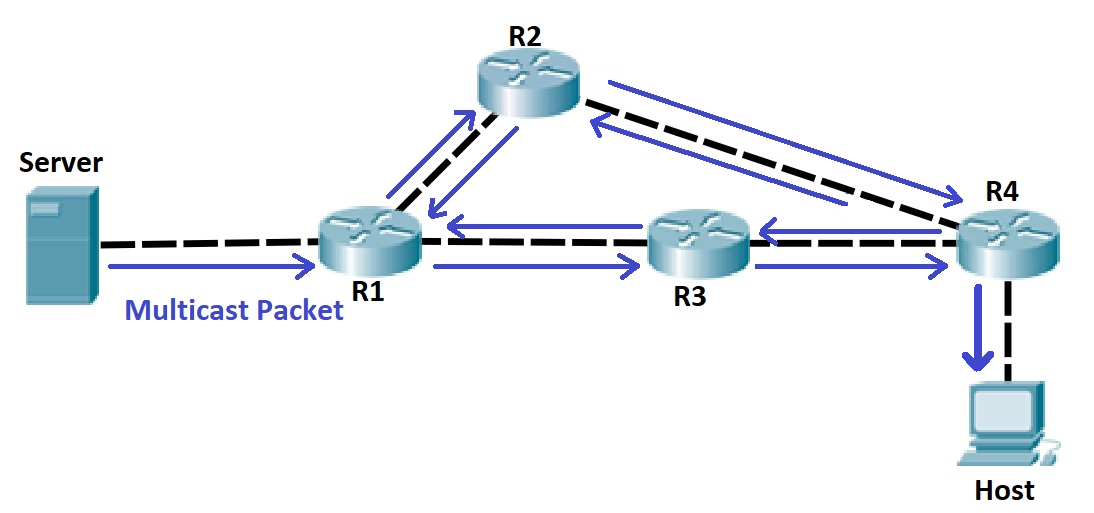Protocol Independent Multicast (PIM) dense mode (PIM-DM) is a push model where we flood all interfaces with multicast packets until a downstream router requests the upstream router to stop forwarding multicast traffic. This IP multicast routing protocol mode is effective in specific deployments with active multicast receivers on every subnet in the network. On the other hand, PIM sparse mode is a pull model where multicast traffic is sent only when requested.
The multicast tree is created by flooding traffic from the source interfaces to the Dense Mode routers in the network. The tree grows from the root towards the leaves. As the routers receive the traffic for the multicast groups, they will check if there are active receivers to receive multicast packets. The router will let the multicast traffic flow if there are active receivers. If there are no receivers, the router will send a prune message toward the source.
The tree branch will then be pruned to prevent unnecessary traffic. The tree will then be referred to as a source tree since it is unique from the source to the receivers.
How Does Multicast PIM Dense Mode (PIM-DM) Work?
In our example topology below, we have a server that sends a multicast packet towards R1. Once R1 receives this multicast traffic, it will create an entry in its multicast routing table where it stores the source IP address and multicast group address. It will then send the traffic on all of its interfaces except the one where it received the traffic.

- Upstream Router — The router from which we receive multicast traffic.
- Downstream Router — The router to which we send multicast traffic.
Each downstream router not interested in the multicast traffic will send a prune message to its upstream router. Prune messages tell the source routers that it doesn’t need that multicast traffic right now.

PIM Dense Mode Pruning
Prunes expire after three minutes in PIM-DM. This allows multicast traffic to be re-flooded to all routers in the same manner as it did during the initial flood. This periodic flood of every 3 minutes and prune behavior is typical and must be considered when designing a network to employ PIM-DM.
Below are the reasons why a router will send a prune message:
- There is no directly connected host interested in the multicast traffic.
- There is no downstream router interested in the multicast traffic.
- The multicast traffic was received on a non-Reverse Path Forwarding (RPF) interface.
PIM-DM is appropriate for small networks with active receivers on each subnet. PIM-DM is not typically recommended for production environments. Nevertheless, it can be beneficial in a lab environment because it is simple to set up.
Download our Free CCNA Study Guide PDF for complete notes on all the CCNA 200-301 exam topics in one book.
We recommend the Cisco CCNA Gold Bootcamp as your main CCNA training course. It’s the highest rated Cisco course online with an average rating of 4.8 from over 30,000 public reviews and is the gold standard in CCNA training:
